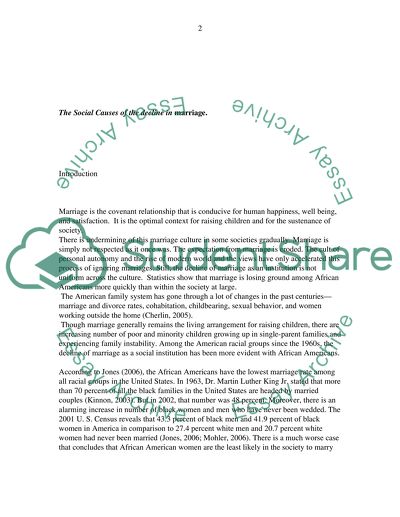Cite this document
(“Social Causes of the Decline in Marriage Essay Example | Topics and Well Written Essays - 2500 words”, n.d.)
Social Causes of the Decline in Marriage Essay Example | Topics and Well Written Essays - 2500 words. Retrieved from https://studentshare.org/miscellaneous/1519896-social-causes-of-the-decline-in-marriage
Social Causes of the Decline in Marriage Essay Example | Topics and Well Written Essays - 2500 words. Retrieved from https://studentshare.org/miscellaneous/1519896-social-causes-of-the-decline-in-marriage
(Social Causes of the Decline in Marriage Essay Example | Topics and Well Written Essays - 2500 Words)
Social Causes of the Decline in Marriage Essay Example | Topics and Well Written Essays - 2500 Words. https://studentshare.org/miscellaneous/1519896-social-causes-of-the-decline-in-marriage.
Social Causes of the Decline in Marriage Essay Example | Topics and Well Written Essays - 2500 Words. https://studentshare.org/miscellaneous/1519896-social-causes-of-the-decline-in-marriage.
“Social Causes of the Decline in Marriage Essay Example | Topics and Well Written Essays - 2500 Words”, n.d. https://studentshare.org/miscellaneous/1519896-social-causes-of-the-decline-in-marriage.


